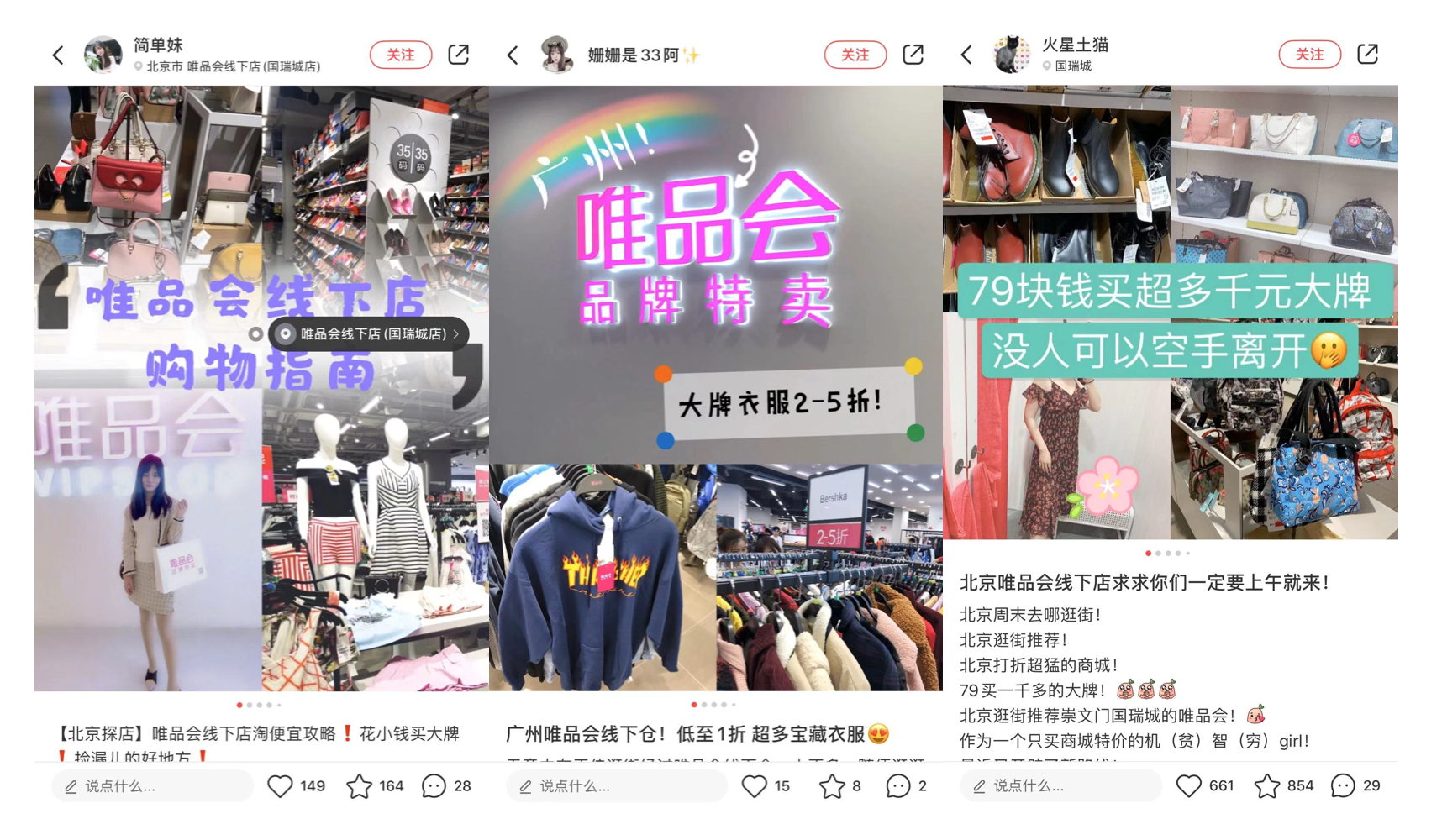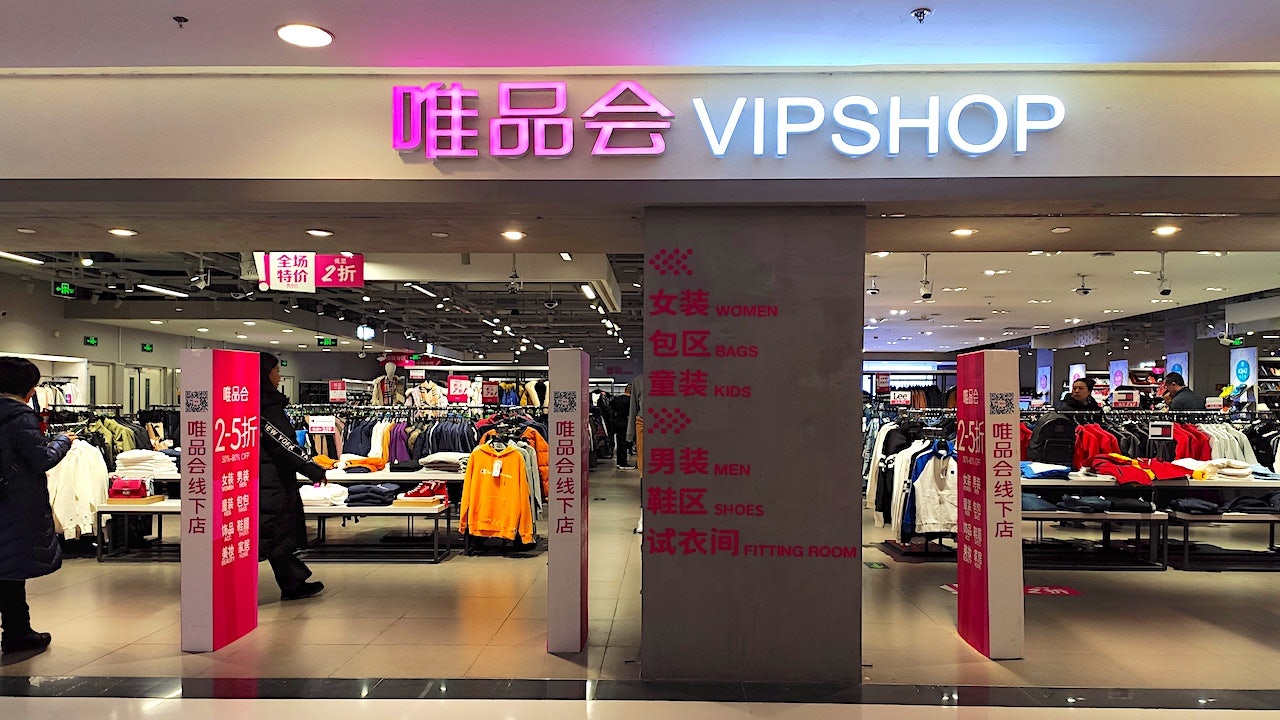Vipshop, the scrappy online e-commerce platform known for its heavy discounts, is catching up to China’s dominant online fashion players. It’s a surprising dark horse that accounted for a sizable market share of the B2C e-commerce industry in China in 2018 Q4, ranking just behind major conglomerates Tmall, JD, and Suning. It was even able to maintain profitability during a period of massive company expansion, and it’s latest Q3 shows double-digit revenue growth.
Vipshop’s winning ways haven’t gone unnoticed, and they were rewarded when both Tencent and JD.com invested $863 million in the company in 2017. But despite its impressive financial performance, Vipshop’s fast and furious move to create offline ventures has mostly gone unnoticed. Multiple Vipshop stores have quietly launched around China in places ranging from second-tier cities like Changsha to lower-profile areas of Beijing, Shanghai, and Guangzhou. According to Vipshop, there are now over 100 Vipshop stores scattered across China’s shopping malls.
And even though the revenue contribution from these stores to Vipshop’s overall business is quite small thus far, consumers have been extremely positive about them. The popular social commerce site Little Red Book, for instance, is littered with glowing consumer reviews like “I found a gem at a low price,” “these deals of hard to come by,” and “no one can leave here empty-handed.”

Ambitious offline store network#
Vipshop’s offline business is growing fast, and its data proves the appeal of a good discount isn’t limited to lower-tier cities. According to Vipshop, consumers from tier-4 and tier-5 cities only make up around 30 percent of its business.
The company’s decision to go offline makes sense with China’s consumers increasingly shopping in “omnichannel” ways. Meanwhile, Vipshop’s stores are armed with supplies and added bargaining power which allows them to clear inventory even more effectively. As of now, the offline business is operating at a slight loss, according to the company’s CFO Eric Shen in the company’s Q2 earning’s call. However, the GMV (Gross-Merchandise Value) contribution from those stores has been very significant.
Continuing this trend, on July 10, 2019, Vipshop acquired Shan Shan outlets with $420 million cash. According to the company, Shan Shan is a profitable business with healthy operating cash flow and five profitable outlets in Ningbo, Taiyuan, Harbin, Zhengzhou, and Nanchang. It also has five new ones currently under construction. Such an acquisition is an important part of Vipshop’s new retail strategy.
Seamless shopping experience#
To find out what its in-store experience is like, we stepped into one offline store at the Guorui shopping mall in Beijing on a Thursday night in early January. Compared to other retail stores, the Vipshop was packed with shoppers who were flipping through racks of branded clothing marked with steep discounts. The layout of the store is very similar to a Nordstrom or a TJ Max — both popular inner-city discount outlets in the US. The majority of Vipshop’s merchandise was discounted somewhere between 20 and 50 percent off. It also has a stand-alone section for footwear and handbags from affordable luxury goods makers like Furla, Michael Kors, and Coach. We even found popular fashion “It” items like sweatshirts by Anti-Social Club and Champion and Stan Smith sneakers.
The offline store is a clear demonstration of how Vipshop wants to pull in additional customers who aren’t familiar with its online presence, as similar online players have run into trouble with new user acquisition in the past. That’s why, at the checkout counter, shoppers are asked to sign up for a membership on Vipshop’s WeChat account to receive an added discount.
With its ambitious offline store mapping and seamless in-store experience, Vipshop is showing the ambition to compete with its peers in China’s offline realm, even though retail stores usually demand more consistent funding than online routes. We will continue to watch the profitability of Vipshop’s offline stores to see if this underdog can gain a real advantage in China’s e-commerce space in the future.
